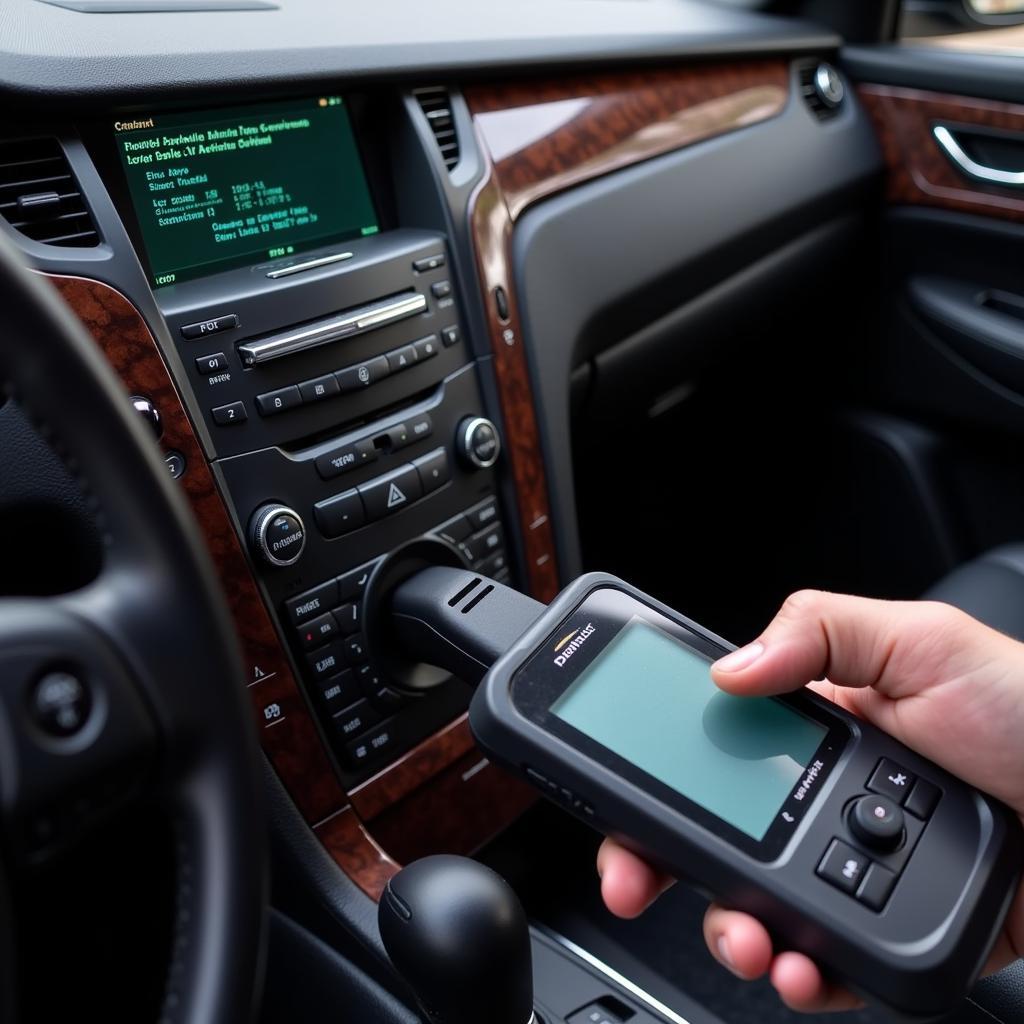Experiencing warning lights and seat vibrations in your Cadillac Escalade can be alarming. This article provides a comprehensive guide to understanding, diagnosing, and resolving these issues, ranging from simple fixes to more complex problems requiring professional attention. Whether it’s a persistent chime, a flashing dashboard light, or an unsettling vibration in your seat, we’ll explore the potential causes and offer solutions to get your Escalade back on track.
Understanding Cadillac Escalade Warning Systems
Your Escalade’s sophisticated warning system is designed to alert you to potential problems. Understanding these systems is crucial for effective troubleshooting. The system uses a combination of visual cues, such as dashboard warning lights, and tactile feedback, like seat vibrations, to communicate important information. These warnings can range from low tire pressure to more serious issues like engine malfunctions or safety system failures. Ignoring these warnings can lead to further damage and costly repairs down the line.
Common Warning Lights and Their Meanings
Several warning lights might accompany seat vibrations, each indicating a different issue. The check engine light, for instance, could signal anything from a loose gas cap to a more severe engine problem. The ABS light indicates a problem with the anti-lock braking system, while the traction control light suggests an issue with the vehicle’s stability system. A flashing airbag light signifies a potential problem with the supplemental restraint system. Recognizing these lights and their corresponding meanings is the first step in addressing the underlying issue.
The Role of Seat Vibrations
Seat vibrations often accompany visual warnings, serving as a tactile reinforcement to grab your attention. This is especially useful in situations where a visual warning might be missed, such as during nighttime driving or if the driver is momentarily distracted. The intensity and location of the seat vibration can also provide clues about the nature of the problem. For instance, a vibration in the driver’s seat might indicate a driver-specific issue like a seatbelt not being fastened, while a vibration in all seats might suggest a more general vehicle problem.
Diagnosing the Problem
Diagnosing the cause of warning lights and seat vibrations can sometimes be straightforward, while other times it requires more in-depth investigation.
Initial Checks
Start with the basics. Check your owner’s manual for specific information regarding the warning lights displayed. Ensure all doors are properly closed and that seatbelts are fastened. Inspect tire pressure and look for any obvious signs of damage or leaks. These simple checks can often resolve minor issues and prevent unnecessary trips to the mechanic.
Using Diagnostic Tools
For more complex issues, diagnostic tools can be invaluable. OBD-II scanners can retrieve diagnostic trouble codes (DTCs) stored in the vehicle’s computer, providing specific insights into the problem. These codes can pinpoint the faulty system or component, saving you time and money on guesswork.
 OBD-II Scanner Connected to Cadillac Escalade
OBD-II Scanner Connected to Cadillac Escalade
Remote Diagnostics and Programming
In some cases, remote diagnostics and programming can offer a convenient and efficient solution. This technology allows qualified technicians to access your vehicle’s systems remotely, diagnose problems, and even install software updates to fix certain issues without requiring a physical visit to a repair shop.
Solutions and Repairs
Once you’ve diagnosed the problem, you can take appropriate action. Some issues, like low tire pressure or a loose gas cap, can be easily fixed at home. Others, however, might require professional attention.
DIY Fixes
For minor problems, DIY solutions can save you money. Refer to your owner’s manual for instructions on resetting warning lights and addressing simple issues. However, proceed with caution and only attempt repairs you’re comfortable with.
Professional Repair
For complex issues or those requiring specialized tools and knowledge, seek professional help. A qualified Cadillac technician can accurately diagnose and repair the problem, ensuring your Escalade is back in optimal condition.
 Cadillac Escalade Undergoing Repair at a Service Center
Cadillac Escalade Undergoing Repair at a Service Center
Preventing Future Problems
Regular maintenance is crucial for preventing future warning lights and seat vibrations. Adhering to your Escalade’s recommended service schedule can help identify and address potential issues before they escalate.
Conclusion
Addressing cadillac escalade warning and seat vibration promptly is essential for maintaining the safety and performance of your vehicle. By understanding your vehicle’s warning systems, using appropriate diagnostic tools, and seeking professional help when needed, you can ensure a smooth and safe driving experience.
FAQ
- What should I do if my Cadillac Escalade seat vibrates but there are no warning lights? Check your owner’s manual, ensure all doors and seatbelts are secure, and consult a professional if the issue persists.
- Can I ignore seat vibrations if they are intermittent? No, intermittent vibrations can still indicate a potential problem. It’s best to diagnose the cause.
- How much does it cost to diagnose Cadillac Escalade warning lights? The cost varies depending on the complexity of the problem and the service provider.
- Are there any common causes of seat vibrations in Cadillac Escalades? Common causes include issues with the seatbelt sensor, airbag system, or stability control system.
- Is it safe to drive my Cadillac Escalade with warning lights on? It depends on the specific warning light. Consult your owner’s manual and err on the side of caution. If unsure, have the vehicle inspected by a professional.
- Can remote diagnostics fix all Cadillac Escalade problems? No, some problems require physical inspection and repair. Remote diagnostics can, however, address certain software-related issues and aid in initial diagnosis.
- How can I prevent future warning lights and seat vibrations in my Cadillac Escalade? Regular maintenance and adhering to the recommended service schedule are key to preventing future problems.
